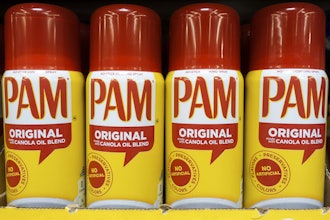Porking The Pig With Labels
Within the next few months, shoppers can expect to see an unfamiliar word on the labels of some pork products: “ractopamine.”
While many of never heard of it, ractopamine is a drug that’s been given to pigs in America for more than a decade. As a “beta-agonist,” the drug is used to pork up pigs with muscle, rather than fat – adding a few dollars of income to each pig.
But while ractopamine was FDA-approved in 1999, safety regulators in the EU, China, Russia and other countries have banned it, stating there is not enough evidence to prove that pork produced using ractopamine is safe to eat.
Now in the U.S. this is likely to become a hotter topic because the USDA just approved a bill requiring that pork producers to label their products when they don’t use ractopamine. This could be bad news for conventional pork producers, since consumers are likely to see the label, assume it must be bad for them, and specifically look for ractopamine-free labels. Consumer awareness will likely put pressure on farmers to stop using this profitable drug.
Home-made Heroin?
To make any opiate — from prescription painkillers to heroin — you need the goo that comes from opium poppy seeds. But recently, researchers from Stanford released a report saying they managed to create the drugs without the plants in a lab.
Using genetically altered yeast, the scientists were able to convert sugar into hydrocodone, the active ingredient of the narcotic painkiller, Vicodin. They also used another yeast strain to make a key compound in oxycotin and morphine.
The advancement is great news for securing a cheap supply of the drugs and could pave the way to developing other pharmaceuticals. But of course, many are worried the technology could hit the streets.
The team, however, said there are strong limitations to pulling this off in your kitchen. First, it took 20 different genes to produce the yeast, including genes from rats, bacteria and other poppies.
Plus, the team was only able to produce miniscule amounts of the drugs — and they say they’re about 2 years away from figuring out how to scale the process up. And because of the expertise and equipment needed for production they say home-brewed opiates is, at least for now, not possible.
Where’s the Beef?
With cattle prices at record levels, ranchers across the United States — and especially in Texas — have been asking an important and expensive question of late: Where’s the beef?
The answer is that a significant amount has gone missing in the last year. According to a report from The Associated Press, nearly 5,800 instances of stolen or missing cattle were reported in Texas in 2014, the highest such total in the past five years. The value of the missing animals was reported to be more than 5.7 million dollars, according to the AP.
So what is Texas, the largest beef-producing state in the U.S., doing to combat the rising thefts? The state, which has approximately 12 million head of cattle, relies on 30 Special Rangers with the Texas and Southwestern Cattle Raisers Association to help pursue the rustlers.
The Special Rangers have already worked almost 400 theft cases in Texas and Oklahoma this year, and have done so with some success. According to the AP, their work led to a Texas man being charged last month with theft after more than 500 steers valued at 800,000 dollars went missing.






















